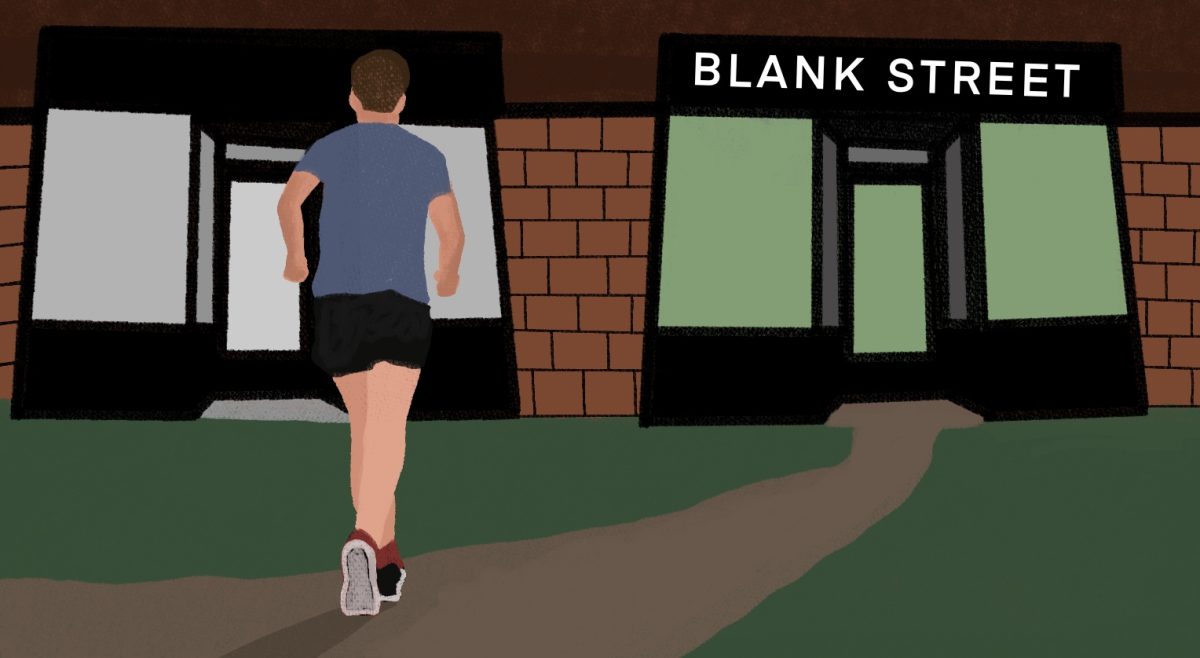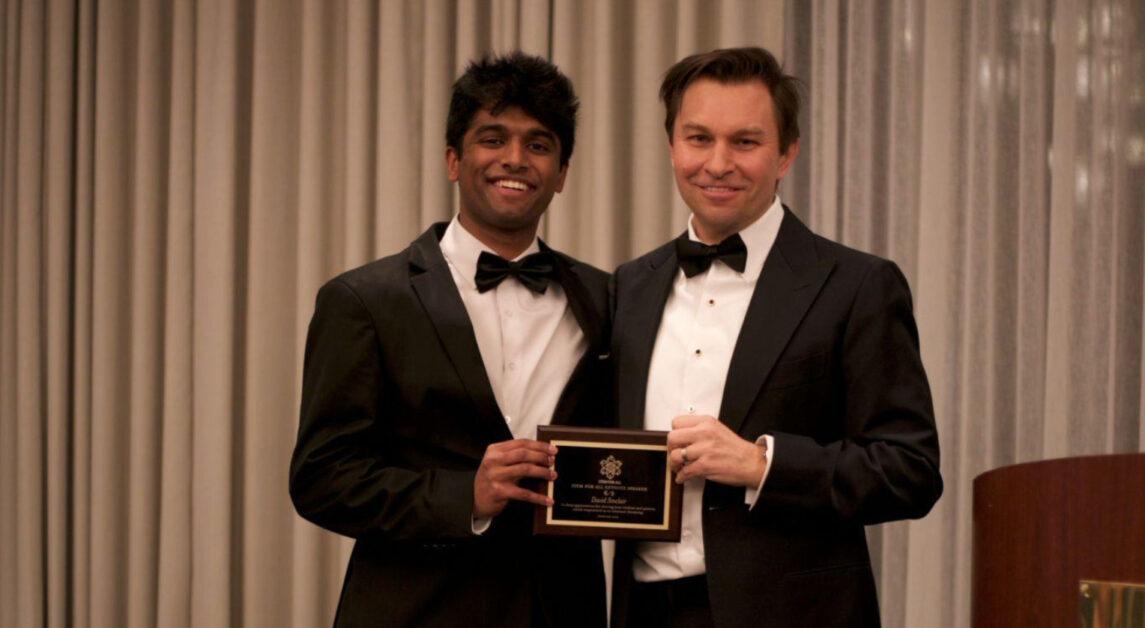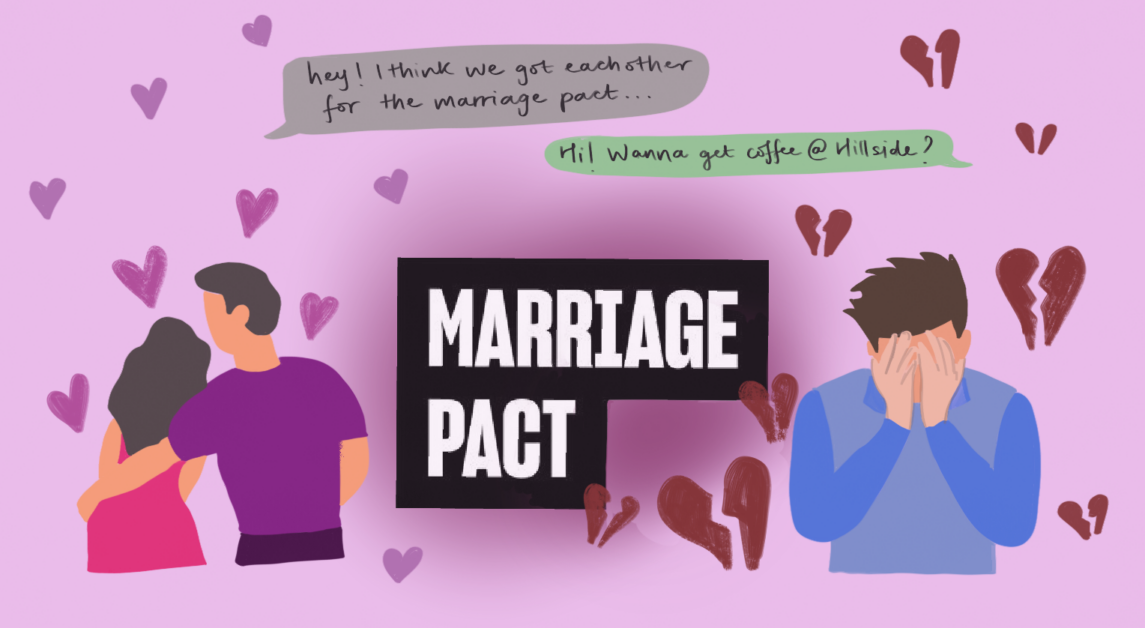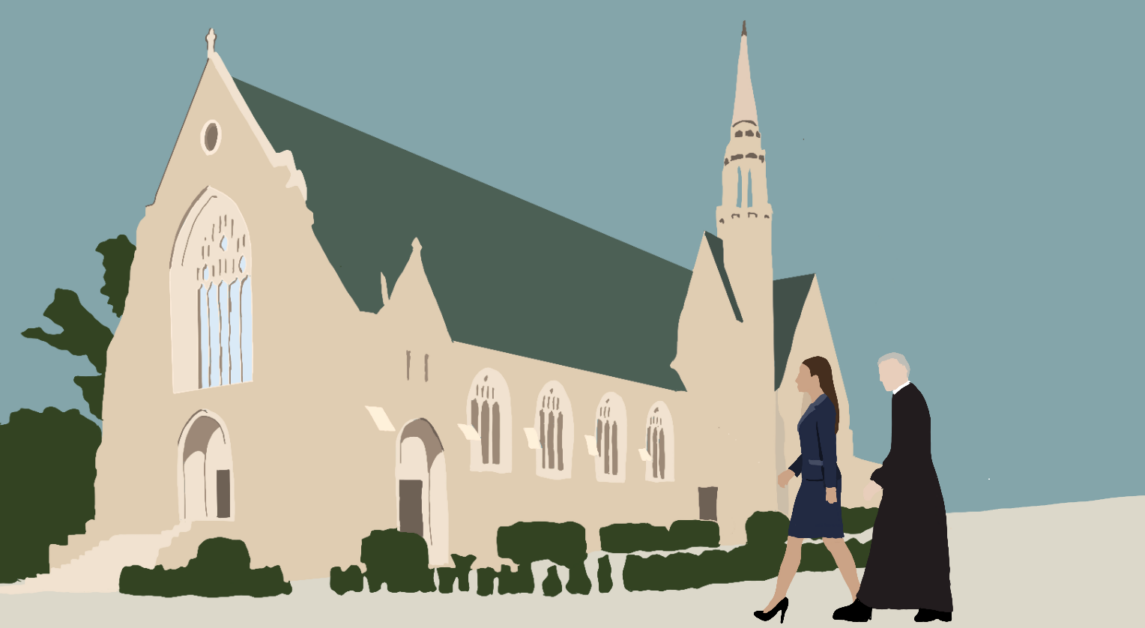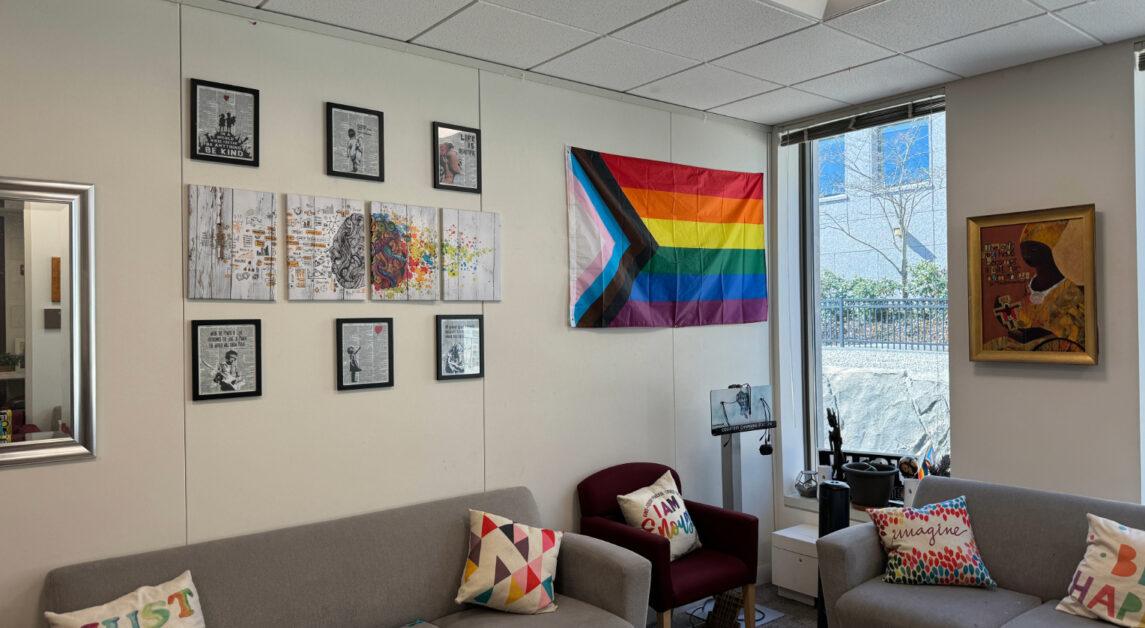Kenneth Beato works at the front desk of the Thea Bowman AHANA and Intercultural Center (BAIC) at Boston College. By checking students in for appointments and informing them about BAIC resources, Beato, CSOM ’25, said he serves as a bridge between the rest of BC’s campus and what he describes as a safe haven for himself and other AHANA students.
Beato said his role at the BAIC has been an integral part of his college experience. Not only because of the friendships he has made through the center, but as a Black person and first-generation college student at a predominantly white university, he said the BAIC lets him connect with others who understand his experience at BC.
In this way, the state of diversity at BC is not a mere political hot button to Beato—he said it is a reality he endures every day at school, whether he is walking around campus or sitting in class.
“I would be a liar if I said it didn’t destroy me mentally, and I was looking around and I’m like ‘Do I fit in this space, am I worthy to even be around all these kids?’’ Beato said. “And like, it’s kind of drilling because they’re all white, and I’m the only Black person in that classroom.”
On June 29, the Supreme Court ruled to ban the consideration of race in college admissions. Students for Fair Admissions (SFFA), an anti–affirmative action advocacy group, sued both the University of North Carolina at Chapel Hill and Harvard University.
In the lawsuit, SSFA argued that UNC’s admissions policy violated the Equal Protection Clause of the 14th Amendment. And in its case against Harvard, SSFA stated that Harvard’s admissions policy discriminates against Asian Americans and therefore violated Title VI of the Civil Rights Act.
The Supreme Court ruled 6–3 against UNC and 6–2 against Harvard. In the majority’s opinion, Roberts argued the way in which universities consider race in admissions violates the 14th Amendment.
“The Harvard and UNC admissions programs cannot be reconciled with the guarantees of the Equal Protection Clause,” Roberts wrote. “Both programs lack sufficiently focused and measurable objectives warranting the use of race, unavoidably employ race in a negative manner, involve racial stereotyping, and lack meaningful endpoints. We have never permitted admissions programs to work in that way, and we will not do so today.”
Following these rulings, conversations surrounding racial representation and fairness dominated national media as the many communities impacted by affirmative action discussed what these rulings mean for them.
On a legal level, the court’s recent rulings created a new judicial precedent. But these rulings will also have a direct impact on the way college admissions offices review applicants—without the ability to consider race in admissions, the diversity landscape on college campuses will likely change for universities such as BC.
Raquel Muñiz, an assistant professor in Lynch School of Education and Human Development and an expert in law and education, said the national debate on racial equality in educational institutions traces back to the landmark 1954 Brown vs. Board of Education case.
“Brown begins a new era in many ways, in helping us think about including race, whether we should, to what purposes,” Muñiz said.
While Brown vs. Board of Education overruled the “separate but equal” principle set forth by the 1896 Plessy v. Ferguson Supreme Court case, racial segregation did not effectively end in 1954. Rather, debate surrounding the desegregation of elementary, secondary, and eventually higher education schools surged in courts and around American society for decades, according to Muñiz.
“This conversation led to different efforts by education institutions to try to take what we would call action that is affirmative in nature to try to address racial segregation [and] the legacy of segregation,” Muñiz said.
With case after case regarding racial equality in education reaching the Supreme Court in the following decades, Muñiz said that universities’ ability to consider race in admissions decisions slowly narrowed under federal law, ensuring that race alone could not be a deciding factor in admissions.
In the 2003 landmark case Grutter v. Bollinger, the Supreme Court upheld affirmative action, permitting the consideration of race for the purpose of promoting diversity within public educational institutions, according to Kent Greenfield, a BC law professor who specializes in constitutional and corporate law.
“Institutions of higher learning could use race as a factor in admissions, as a part of a holistic and individualized process of review of applications to a campus,” Greenfield said.
In this ruling, the court emphasized that any consideration of race should be subject to strict scrutiny, Greenfield said. Additionally, schools could not create quotas based on race or aim for proportional representation. In the majority opinion, written by former Associate Justice Sandra Day O’Connor, the court anticipated that the consideration of race in admissions would be unnecessary in 25 years.
“She sort of created a stopwatch or a time clock for affirmative action with no real necessary sort of match to what the facts are on the ground,” Greenfield said. “It’s sort of based on the notion that the use of diversity is in order to achieve certain ends that become less valuable over time.”
Then, in the 2007 Parents Involved in Community Schools v. Seattle School District No. 1 case, the Supreme Court restricted the use of race in admissions for elementary and secondary schools but deemed it “relevant” for higher education, Greenfield said.
Higher education became an outlier—it was the only educational level where race could still be factored into admissions. So, once Justices Brett Kavanaugh and Amy Coney Barrett joined the court and established a conservative majority, the possibility that higher education would lose its outlier status became all the more likely, according to Greenfield.
With arguments about reverse racism in affirmative action—where plaintiffs report experiencing discrimination as non-minority students—involved in the court’s recent rulings, Muñiz said national litigation about racial equality is more nuanced than decades before.
“While Brown had this broader idea of racial equality, and particularly with a focus on those who had been historically oppressed, that is not the case,” Muñiz said. “Once you get to, you know, the Students for Fair Admissions case that we just heard, it is a completely different landscape.”
In both of the recent affirmative action cases, 57 Catholic universities, including BC, Georgetown University, the University of Notre Dame, and Fordham University, filed an amicus brief—which translates to “friend of the court” brief—stating their support for the use of race-based affirmative action in admissions.
“In that brief, the schools argued in favor of the notion that the use of race in admissions is particularly important for schools with religious missions, because our campus communities are embodiments of our belief and our faith,” Greenfield said.
Although the majority did not mention this brief in its opinion, Justice Sonia Sotomayor refers to it in her dissent. Greenfield added that the Catholic universities presented a solid argument in their amicus brief.
“There’s a pretty strong argument that could be made going forward that that religious based universities or universities motivated by religious faith, have a First Amendment right,” Greenfield said. “In other words, if it’s true that a school considers race and missions in part in order to further their religious obligations, the religious beliefs, their religious duties, then that should be protected by the First Amendment.”
In addition to the strengths of its argument, Muñiz said that the brief demonstrates how religious institutions’ beliefs are not one-size-fits all. By fighting for the use of race-based affirmative action, Muñiz said the brief defies the common perception of Catholics holding conservative views, making a significant nod to the progressive motivations behind many Catholic universities’ foundings.
“BC really was started to counter some of the discrimination against new immigrants who weren’t able to attend other institutions,” Muñiz said. “So there’s a long history with religion and advancing rights of people that unfortunately gets overlooked in this conversation.”
With the brief’s historical legacy and stake in the future, Muñiz said its present impact extends beyond the walls of the Supreme Court. By banding together behind a shared belief, the Jesuit universities’ that co-signed the brief—including BC—have the potential to shape the culture and values that drive other institutions and communities, according to Muñiz.
“They’re speaking to constituencies, not only the court, and so that might mean that it informs efforts on the ground, or that it informs policy, or that it informs even just the Jesuit communities or the Catholic communities more broadly in terms of the values that they want to advance as a collective,” Muñiz said.
When the news of the recent rulings broke, members of the BC community, including students, professors, and administrations, reacted to the new federal standard.
The day the court ruled on the case, Beato said his group chats with friends were buzzing with texts saying the decision felt inconsiderate to them.
Beato said he felt hurt by the decision.
“I just felt a little, you know, disappointed that sadly, now a reality is going to be that now there might be even less of a population of students who look like me or come from similar backgrounds as me,” Beato said. “And there’s going to be even less of a population of that in schools that are already predominantly white.”
Prior to the ruling, Beato said he already felt the mental and social impacts of being a Black and first-generation student at a predominantly white institution.
“For me, it’s just killer when you’re struggling and you start to maybe make connections like, ‘Well, am I struggling because I’m a person of color?’ and ‘Do I belong here in an institution where everyone is white?,’” Beato said. “You really start picking at yourself—bringing yourself down for no reason.”
Now, Beato thinks the ruling may impact the BC community in multiple ways—ranging from a possible increase in campus debate on affirmative action to a rise in the stress minority students feel due to the pressure to excel academically.
“For some people, I think it can push them to perform in school even better because they think ‘Okay, if [other students ] think this is the only reason why I made it to school and not because I was genuinely smart,’” Beato said. “At the same time, it might disrupt them in a way—that their own school doesn’t even care that they had to overcome all these issues to even make it to the school.”
Beato said his greatest comfort at BC is being surrounded by students at the BAIC with similar backgrounds. While he said the court’s ruling will alter the overall culture of BC and may make the institution less diverse, Beato said he thinks the students in the BAIC may feel a closer bond.
“I think it might be a positive for the BAIC because I feel like the community might actually want to be much more of a family,” Beato said.
Following the court’s ruling, University President Rev. William P. Leahy, S.J. issued a statement condemning the decision and confirming BC’s mission to enroll a diverse student body.
“Today’s Supreme Court ruling banning the inclusion of race as a factor in the college admission process is a frustrating departure from a decades-long judicial precedent,” the statement read. “Consideration of race in admission decisions has enabled higher education institutions like Boston College to identify, enroll, and graduate talented students from diverse racial groups.”
As a result of these rulings, Greenfield said universities, including BC, will certainly become less diverse.
“The number of people of color on campus, particularly Black students, particularly Latinx students, will fall pretty significantly,” Greenfield said.
Without race-conscious admissions, Muñiz said that students may not even feel confident enough to apply in the first place, further lowering the diversity of competitive institutions like BC.
“Hopefully, this is not the case, but you could have students and families also less likely to apply to selective institutions like BC, because they might think that they will not succeed or the like in the admissions process,” Muñiz said.
Although there are other methods colleges can implement to build diversity without considering race in admissions, these secondary measures are not completely reliable, Greenfield said.
“There are ways that some universities are trying to build diversity in their campuses without the use of race,” Greenfield said. “Maybe you use zip codes or socio economic status … but those are sort of, at best, imperfect proxies.”
On June 20, UGBC signed onto a statement regarding affirmative action issued by the Boston Intercollegiate Government (BIG), a coalition of student governments in the Greater Boston area. In the statement, BIG and the signatories emphasized the importance of diversity on college campuses.
“In our conversations with our school administrators, we will underscore the need for targeted recruitment efforts for prospective students in underrepresented communities and for increased financial aid and scholarship opportunities for students from disadvantaged backgrounds,” the statement read.
In a statement to The Heights, UGBC echoed this sentiment, highlighting its commitment to diversity and fostering an inclusive campus community.
“While the decision is a blow to historically marginalized and low-income students, the Undergraduate Government of Boston College maintains that no decision handed down from Washington will deter our dedication to diversity on The Heights, regardless of one’s background,” the statement reads.
The UGBC leadership team is actively planning programs and events to promote diversity, according to the statement. By communicating with the BC administration, UGBC said it will work to empower students from marginalized communities.
“We will continue to push Boston College to grow with the ever-changing world around it, regardless of a regressive political decision,” the statement reads. “We will do this by continuing our conversations with administrators – especially those at the Thea Bowman AHANA and Intercultural Center (BAIC), Admissions, and the Pine Manor Institute for Student Success – in order to provide critical resources for students, and ensure that Boston College remains a flourishing, diverse body of unique and talented students.”
In his original statement, Leahy said the University will hold steadfast in its commitment to enrolling a diverse student body by continuing to offer need-based undergraduate financial aid and developing academic support programming at the Pine Manor Institute for Student Success and Messina College.
Muñiz said after the ruling, a university’s mission—like BC’s—will be crucial to promote diversity in admissions. And within the bounds of the new law, Muñiz said it is still possible for universities to partner with high schools and reach out to minority prospective students to promote diversity.
“I think that institutions like BC that do have the resources should engage in those efforts of outreach and partnerships to diversify the pool of students that are going to be applying,” Muñiz said.
Higher education’s overall quality will worsen due to the lack of diversity on campuses, Greenfield said. To him, diversity is imperative to the college experience.
“Diversity on campuses is extremely important,” Greenfield said. “It’s extremely important for education, it’s extremely important to make dialogue, important to bring in different perspectives in classrooms and faculty lounges, meetings, staff meetings, walking across the college quad—all these things are extremely important.”
To Muñiz, the Students for Fair Admissions v. Harvard case is a piece of a greater historical picture on how racial equality in the United States has evolved. She said that she is hopeful that the promise of Brown—true racial equality and diversity in educational institutions—will be realized at some point in the future.
“I think we’re in a moment where we just have to think about how we are really thoughtful and intentional in creating institutions that resemble what America looks like and that ultimately, we hold steadfast and true to those values that we do have, which are, you know, equality in its many forms, and particularly with racial equity,” Muñiz said.



